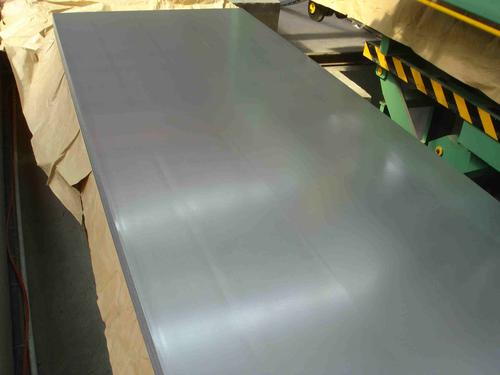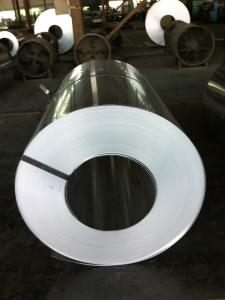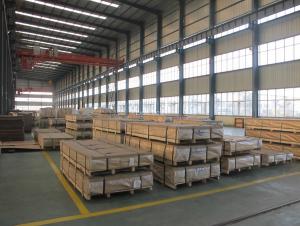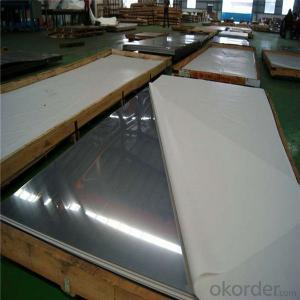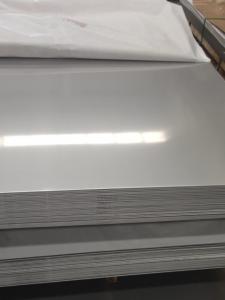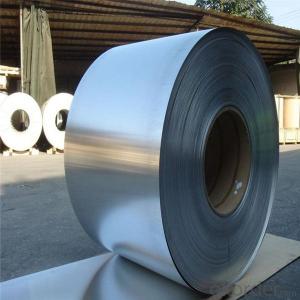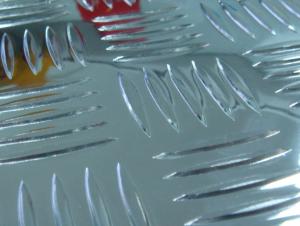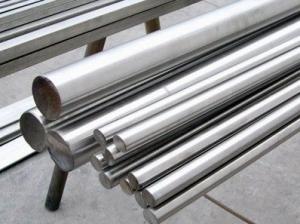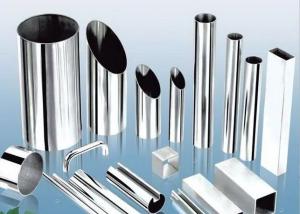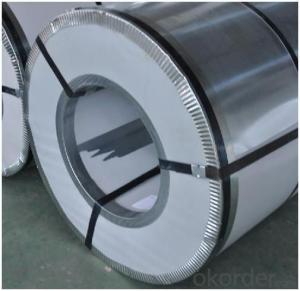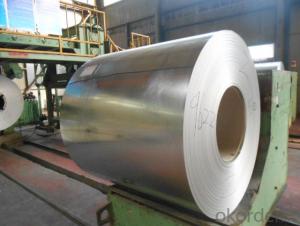stainless steel plate and sheet 301 cold rolled stocks
- Loading Port:
- Tianjin
- Payment Terms:
- TT OR LC
- Min Order Qty:
- -
- Supply Capability:
- 5000 m.t./month
OKorder Service Pledge
Quality Product, Order Online Tracking, Timely Delivery
OKorder Financial Service
Credit Rating, Credit Services, Credit Purchasing
You Might Also Like
grade | 201,301,304,310,316,410,420,430,etc. |
surface | 2B,NO.1, NO.4, Mirror, Hairline, etc. |
thickness | 1MM, |
width | 1200MM,1220MM,1500MM,ETC. |
length | 2400MM,2440MM,3000MM,ETC. |
Payment terms | T/T, or L/C. |
Delivery time | Normally within 1 weeks after get your deposits. |
package | Standard export package, normally with wooden pallets |
MOQ | 5 tons/each size |
OUR STAINLESS STEEL SHEET CAN BE USED IN THE DIFFERENT FIELD,
SUCH AS: CONSTRUCTION FIELD, DECORATION FIELD, ETC.
- Q: Are stainless steel sheets suitable for chemical storage vessels?
- Yes, stainless steel sheets are suitable for chemical storage vessels. Stainless steel is known for its excellent corrosion resistance, making it an ideal material for storing various chemicals. It is resistant to most acids, alkalis, and solvents, which ensures the integrity of the storage vessel and prevents any chemical reactions or leaks. Additionally, stainless steel is highly durable and can withstand high temperatures and pressure, making it suitable for a wide range of chemical storage applications.
- Q: What are the different types of stainless steel sheet finishes for decorative purposes?
- There are several different types of stainless steel sheet finishes that are commonly used for decorative purposes. These finishes are achieved by various surface treatments and processes, each resulting in a unique appearance and texture. Some of the most popular finishes include: 1. No. 4 finish: Also known as brushed or satin finish, it is achieved by applying a series of abrasive belts to the surface, resulting in a smooth, satin-like appearance. This finish is commonly used in architectural and decorative applications. 2. No. 8 mirror finish: This finish is achieved by polishing the surface to a highly reflective mirror-like appearance. It is often used in applications where aesthetic appeal is important, such as wall cladding, signage, and decorative elements. 3. Hairline finish: This finish features a fine, directional grain pattern created by polishing the surface with fine abrasive belts. It provides a subtle and elegant look, commonly used in interior design applications like elevators, appliances, and furniture. 4. Embossed finish: In this finish, the stainless steel sheet is pressed with a pattern or texture, creating a three-dimensional surface. This finish is often used in architectural applications, such as wall panels, ceiling tiles, and decorative trim. 5. Bead blasted finish: This finish is achieved by blasting the surface with fine glass beads under high pressure, resulting in a uniform, matte appearance. It provides a unique texture and is commonly used in applications where a non-reflective surface is desired, such as countertops, kitchen appliances, and signage. 6. Colored finishes: Stainless steel sheets can also be coated with various colors through processes like PVD (Physical Vapor Deposition) or powder coating. These finishes provide a wide range of color options, allowing for more design flexibility in decorative applications. Overall, the choice of stainless steel sheet finish for decorative purposes depends on the desired aesthetic, functionality, and application requirements. Each finish offers its own unique look and feel, allowing for versatile design possibilities in various industries.
- Q: Are stainless steel sheets good for cryogenic storage?
- Stainless steel sheets are widely utilized in cryogenic storage owing to their exceptional characteristics. Renowned for its remarkable strength, durability, and corrosion resistance, stainless steel proves to be ideal for extreme temperature settings such as cryogenic storage. Furthermore, stainless steel retains its mechanical properties even under extremely low temperatures, guaranteeing the safety and integrity of stored materials. Moreover, stainless steel sheets exhibit favorable thermal conductivity, enabling efficient heat transfer throughout cryogenic processes. As a result, stainless steel sheets emerge as a dependable option for cryogenic storage purposes.
- Q: What are the standard sizes of stainless steel sheets?
- The specific industry and application dictate the varying standard sizes of stainless steel sheets. Nevertheless, there exist some widely accessible commonly used standard sizes. In the architectural and construction sector, stainless steel sheets usually come in sizes ranging from 4 feet by 8 feet (1220mm x 2440mm) to 5 feet by 10 feet (1524mm x 3048mm). These dimensions find common use in cladding, roofing, and interior design applications. In the manufacturing and industrial domains, stainless steel sheets are available in diverse sizes, including 4 feet by 8 feet, 4 feet by 10 feet (1220mm x 3050mm), and even larger sizes like 5 feet by 12 feet (1524mm x 3658mm). These larger dimensions frequently serve fabrication, industrial machinery, and equipment manufacturing purposes. It is important to acknowledge that custom sizes can also be produced according to specific project requirements. These custom sizes may encompass narrower or wider widths, longer or shorter lengths, or even different thicknesses to cater to a particular application's needs. Ultimately, industry standards, market demand, and manufacturer capabilities determine the standard sizes of stainless steel sheets. It is advisable to consult suppliers or manufacturers to verify the availability of the desired size before making a purchase.
- Q: How do you prevent fingerprints or smudges on stainless steel sheets?
- To prevent fingerprints or smudges on stainless steel sheets, there are several effective measures you can take: 1. Clean with a microfiber cloth: Use a soft microfiber cloth to wipe down the stainless steel surface regularly. Microfiber is known for its ability to attract and trap dirt, dust, and oils without leaving streaks or smudges. 2. Use warm soapy water: Mix a small amount of mild dish soap with warm water and gently wipe the stainless steel surface with a soft cloth or sponge. Rinse thoroughly and dry with a clean towel. This method effectively removes grease, fingerprints, and smudges. 3. Invest in stainless steel cleaners: There are numerous stainless steel cleaning products available in the market. These cleaners are specifically formulated to remove fingerprints, smudges, and restore the shine of stainless steel surfaces. Follow the instructions on the product for best results. 4. Apply a protective coating: Consider using a stainless steel protective coating or sealant. These products create a thin, invisible barrier that helps repel fingerprints and smudges. Apply the coating according to the manufacturer's instructions and reapply as needed. 5. Avoid abrasive cleaners or tools: Abrasive cleaners, scrub brushes, steel wool, or harsh chemicals can damage the protective layer of stainless steel, making it more prone to fingerprints and smudges. Stick to non-abrasive cleaning methods and tools to maintain the integrity of the stainless steel surface. 6. Handle with care: When touching stainless steel sheets, try to handle them with clean hands or wear gloves to prevent the transfer of oils or dirt. Avoid dragging objects across the surface, as this can cause scratches and make it more susceptible to smudging. By incorporating these preventive measures into your cleaning routine and handling practices, you can effectively minimize fingerprints and smudges on your stainless steel sheets, keeping them looking clean and pristine.
- Q: How do you prevent stress corrosion cracking in stainless steel sheets?
- Several measures can be implemented to prevent stress corrosion cracking in stainless steel sheets. Firstly, it is crucial to select the appropriate grade of stainless steel that is resistant to stress corrosion cracking. While commonly used grades like 304 and 316 have good resistance, more aggressive environments may require specialized alloys such as duplex stainless steels or high nickel alloys. In addition, controlling the environment surrounding the stainless steel sheets is important. This involves avoiding exposure to corrosive agents like chlorides, sulfides, and acids. Proper pH levels and temperature should also be maintained to minimize the risk of stress corrosion cracking. Proper fabrication and handling techniques should be followed to prevent the introduction of stress that can lead to cracking. Unnecessary bending, cold working, or overloading should be avoided. Proper storage and handling techniques should also be employed to prevent surface contamination or damage that may facilitate stress corrosion cracking. Applying protective coatings or passivation treatments can enhance the corrosion resistance of stainless steel sheets. These treatments create a passive oxide layer on the surface that acts as a barrier against corrosive agents, reducing the risk of stress corrosion cracking. Stress relief heat treatment can be performed on stainless steel sheets to remove residual stresses induced during fabrication. This involves heating the sheets to a specific temperature and holding it for a certain period, followed by slow cooling. Stress relief heat treatment helps to minimize the risk of stress corrosion cracking by reducing internal stress levels. Regular inspection and maintenance are essential to identify any signs of stress corrosion cracking at an early stage. This allows for timely repairs or replacements to prevent further damage. Proper maintenance practices such as cleaning, removing deposits, and ensuring proper drainage can also contribute to the prevention of stress corrosion cracking. By following these preventive measures, the risk of stress corrosion cracking in stainless steel sheets can be significantly reduced, ensuring the durability and integrity of the material in various applications.
- Q: Are stainless steel sheets resistant to UV rays?
- Yes, stainless steel sheets are resistant to UV rays. Stainless steel is known for its durability and corrosion resistance, and this extends to its ability to withstand exposure to UV rays. The chromium content in stainless steel forms a protective oxide layer on the surface, which helps prevent the metal from oxidizing or corroding when exposed to sunlight. This oxide layer acts as a barrier that shields the stainless steel from UV rays, making it highly resistant to the damaging effects of prolonged sun exposure. Therefore, stainless steel sheets are an excellent choice for outdoor applications where UV resistance is a requirement, such as roofing, cladding, and architectural elements.
- Q: Are stainless steel sheets suitable for elevator doors?
- Yes, stainless steel sheets are suitable for elevator doors. Stainless steel is a durable and corrosion-resistant material that can withstand the wear and tear associated with elevator use. It also offers a sleek and modern appearance, making it a popular choice for elevator doors in various settings.
- Q: What is the thermal expansion rate of stainless steel sheets?
- The thermal expansion rate of stainless steel sheets varies based on the specific grade of stainless steel and the temperature range it is exposed to. Typically, stainless steel has a coefficient of thermal expansion (CTE) of approximately 10-17 x 10^-6 per degree Celsius (µm/m°C). This implies that for each degree Celsius rise in temperature, the stainless steel sheet will expand by 10-17 micrometers per meter of length. It is worth noting that the CTE may slightly differ for various grades of stainless steel, so it is advisable to refer to the manufacturer's specifications or engineering handbooks for more accurate information regarding the thermal expansion rate of a particular stainless steel sheet.
- Q: Are stainless steel sheets suitable for kitchen countertops?
- Yes, stainless steel sheets are highly suitable for kitchen countertops. Stainless steel is a popular choice for kitchen countertops due to its numerous benefits. Firstly, stainless steel is extremely durable and resistant to stains, heat, and scratches. This makes it perfect for a high-traffic area like the kitchen, where spills, hot pans, and knife marks are common. Additionally, stainless steel is non-porous, which means it doesn't harbor bacteria or germs, making it a hygienic choice for food preparation areas. It is also easy to clean and maintain, as it doesn't require any special cleaning products or sealants. A simple wipe with a damp cloth is usually enough to keep it looking shiny and new. Furthermore, stainless steel has a sleek and modern appearance that complements various kitchen styles and designs. It can be paired with different cabinetry colors and materials, creating a timeless and contemporary look. Stainless steel is also versatile, as it can be custom fabricated to fit any kitchen layout, including seamless integration with sinks and backsplashes. Lastly, stainless steel is an environmentally friendly choice for kitchen countertops. It is a recyclable material, and many stainless steel products are made from recycled steel. This makes it a sustainable option for those looking to reduce their environmental impact. In conclusion, stainless steel sheets are an excellent choice for kitchen countertops due to their durability, resistance to stains and scratches, hygienic properties, easy maintenance, sleek appearance, and environmental friendliness.
Send your message to us
stainless steel plate and sheet 301 cold rolled stocks
- Loading Port:
- Tianjin
- Payment Terms:
- TT OR LC
- Min Order Qty:
- -
- Supply Capability:
- 5000 m.t./month
OKorder Service Pledge
Quality Product, Order Online Tracking, Timely Delivery
OKorder Financial Service
Credit Rating, Credit Services, Credit Purchasing
Similar products
Hot products
Hot Searches
Related keywords

